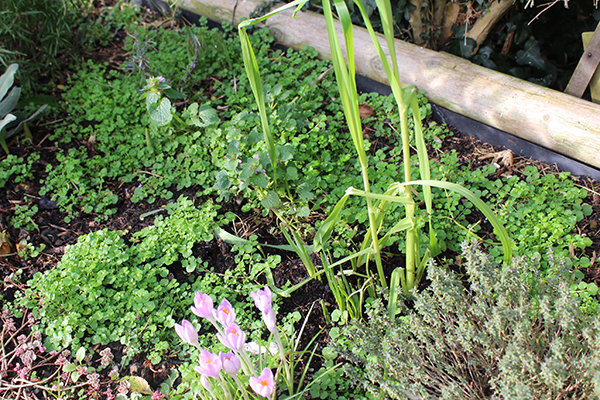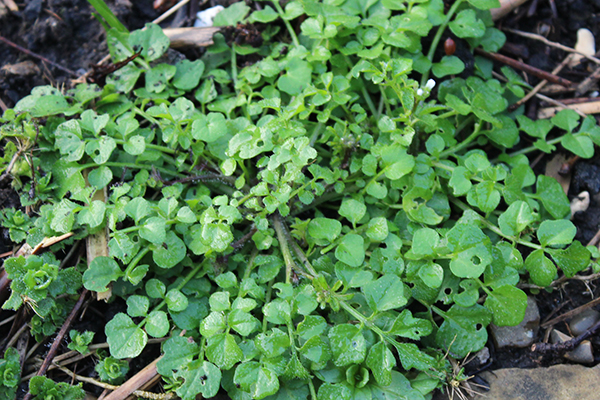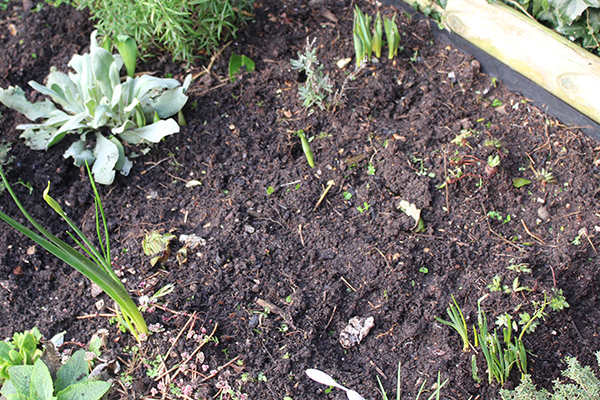It has been an incredibly mild wet winter so far; ideal conditions for the spread of weeds. In my garden, the diminutive but exasperating hairy bittercress has been spreading unchecked.

What does bittercress look like?
Hairy bittercress is a compact annual weed that grows in individual clumps, 3-5 cm tall. It grows out in a basal rosette with pinnate leaves (i.e. the leaves are arranged in pairs on either side of the stems). It has tiny insignificant white flowers that shoot up on stems above the rosette.

How does it spread?
Hairy bittercress has a very short life cycle of 4-6 weeks. Given the right conditions, it will germinate at any time of year, although usually in Spring or Autumn. In this case, it has taken hold during a mild winter and is frost hardy enough to survive the few frosts we have had in the South in December and January.
After germination, it quickly produces clusters of tiny white cross-shaped flowers, and sets seed. Seed dispersal is explosive, sending the tiny seeds up to 1 metre away (or further in windy conditions), which then germinate. And so it continues. Before you know it, a few discrete clumps will have become an expansive mat across the soil surface, making it difficult to see what else is trying emerge this Spring.

How can you control it?
Pull it out when you see it, so that it doesn’t get the opportunity to set seed and take a hold. Obviously, I failed in this respect!
The good news is that hairy bittercress has shallow fibrous roots, making it very easy to remove with a hoe or hand trowel or fork. Dig gently and shallowly so that you don’t disturb the roots of other plants.

So I’ve been removing it (15 minutes at a time) by hand trowel, and can now start to see what’s coming through in the borders.
Remove it from pots too
The seeds of hairy bittercress are very indiscriminate in their choice of landing place, so it has a nasty habit of popping up in pots too. In fact, that is often how it is introduced to gardens, in pots of plants purchased from the garden centre. If you see it, pull or lift it out quickly, before it has a chance to set seed.
Does it have any uses?
Hairy bittercress is a member of the mustard family (Brassicaceae) and as such is edible. Not that I’ve tried it, as all mine have been going in the garden refuse bag. Apparently it is not bitter at all, but mild and peppery.
The leaves are rich in vitamin C, calcium and magnesium, so once I’ve got on top of it in the garden, I may well give it a go on a sandwich!

My 2 1/2 month old puppies are eating it by the clumps. So far, because I know it’s eatable, I haven’t stopped them. Anyone know if I should stop them?